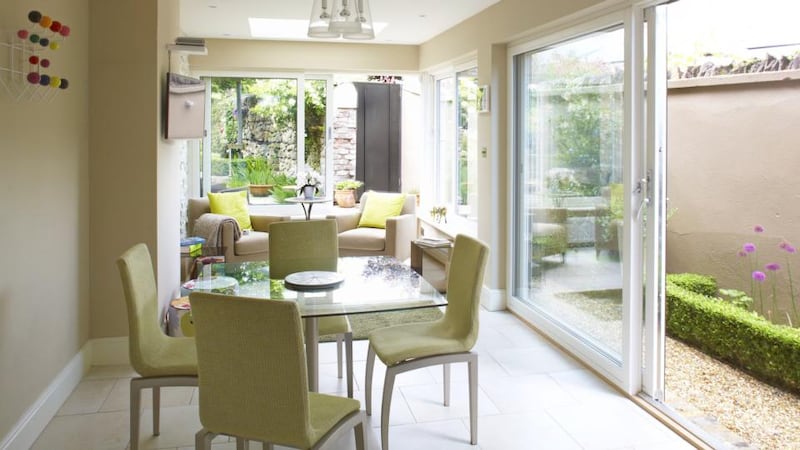Selecting the right windows for your home can be overwhelming given all the styles, materials, colours and features available. Windows are one of the largest outlays in any renovation and prices vary a lot depending on what you choose.
For example, the cost for replacing windows in a typical three-bed semi with Alu-clad is going to be about €18,000 whereas to UPVC would be in the region of €12,000.
So doing some research and investigating your options before you buy will be time very well spent.

New windows will ultimately improve the energy efficiency of your home. It’s worth noting that the majority of the heat loss is through the frame and not the glass, so the different materials in frames will have greater or poorer performance depending on what you choose.
The cost of triple glazing has come down a lot in recent years, but triple glazing will still be the more expensive option. For best results it is preferable to go for triple glazing on a north-, west- or east-facing window but on south-facing windows double glazing will be adequate.
UPVC is the most cost-effective option but just because it is a less expensive material doesn’t mean it is an inferior choice. UPVC is not an insulating material but the better quality windows will have insulation built into the frame.
A well-constructed, properly installed UPVC window can be a practical choice budget-wise, while still offering excellent energy efficiency measures through insulated glass and tight construction that reduces air leakage. UPVC windows tend to have limited colour and style choices and their frames tend to be wider than the other windows options. However some of the more expensive varieties of UPVC windows come in a wide range of colours and with more slender frames, making them a great alternative to timber if that’s the look that you prefer.
Timber windows have a natural insulating ability and they can be painted in any colour, making them a popular choice. The only issue with timber windows is that they will require maintenance in time.
Alu-clad is probably the most attractive option for many people. These are timber windows with an external casing of aluminium. They offer the same low-maintenance qualities as UPVC while maintaining the more tactile timber interior.
The first thing I did when I moved into my house was to take out the single-glazed aluminium windows – but aluminium has come on dramatically since the 1970s versions and is becoming very popular again. It offers very slender frames and large sizes of glazing panels which are suited to more contemporary designs such as floor to ceiling sliding doors.
Steel windows have also become popular recently because of their industrial look which works with interior trends at the moment. However they are a costly option so you will need to ensure you budget carefully if these are your preferred choice.
Anyone who has watched Grand Designs will know all about the chaos caused by the windows being delayed on a project as it means that the house cannot be sealed up to allow the finishing to start.
All windows are on a lead time typically between 4-12 weeks, depending on the product that you choose. So start familiarising yourself with your options as early as you can and ask about the lead times so you can avoid any delays which can be stressful and costly.
Denise O’Connor is an architect and design consultant












